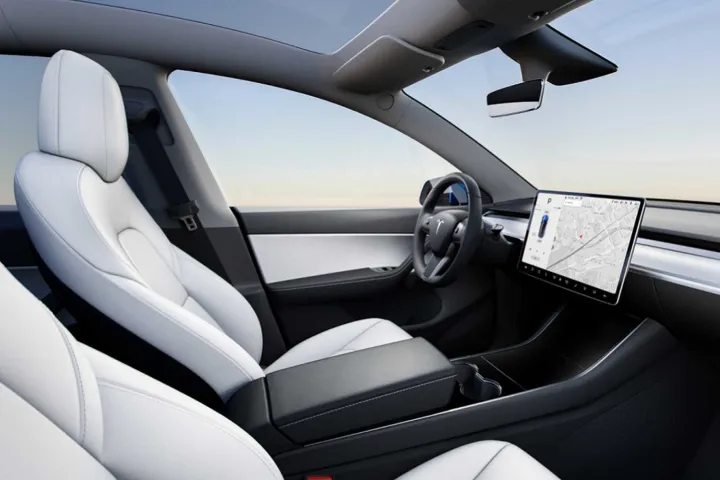Every major carmaker, from Ford to Volvo and beyond, makes an EV these days, but Tesla has had a bit of a head start. As a result, it now offers a well-rounded lineup of electric cars, including sedans and SUVs. Tesla’s cars are still some of the best EVs out there, and if you’re in the market for an electric car, you’re likely considering a Tesla.
Larger cars, like SUVs and crossovers, are the most popular in the U.S. right now — and Tesla offers two of them: The Tesla Model X and the Tesla Model Y. Both have their advantages and disadvantages, and there are a few major differences, including price. Here’s everything you need to know about the two cars and why one or the other might be better for your needs.
Tesla Model X vs. Tesla Model Y: Design

The Tesla Model X and Model Y share similar design language and a similar size, so at first glance they seem to offer more or less the same design. But there are actually a number of key differences between the two cars in terms of design.
The Model X has a more angular look, with squared-off edges and sharp lines. The Model Y, on the other hand, is more rounded and smoother, with a less boxy overall shape than the Model X. One isn’t “better” than the other, but you may prefer one over the other.
One of the Model X’s signature features is its gull-wing doors, which give it an extra bit of style and can be useful in tight parking spots, as the doors open up rather than out. The Model Y doesn’t have these, which keeps the design simpler, but means that you won’t get the benefit of the extra space they provide.
The interior design is similar too, though again, there are a few major differences. For example, the Model Y has a more minimalistic dashboard design, which some people may prefer over the busier look of the Model X. Both cars, however, have two rows of seats by default, with an option for a third row, and a few different options for materials and colors. Note that with the third row, the Model X can be configured to have either six seats or seven seats, while the Model Y with a third row can only be configured for seven seats.
Tesla Model X vs. Tesla Model Y: Size

If you’re buying a Model X or Model Y, you’re likely at least somewhat concerned about size. The Model X is slightly bigger than the Model Y, with a length of 198.3 inches and a wheelbase of 116.7 inches. The Model Y is shorter, at 184.8 inches long with a wheelbase of 113.8 inches. The height differences are subtle too — the Model X stands 66.1 inches tall, while the Model Y is 64.3 inches tall.
That does translate to a little more space inside the car, including a little more headroom and leg space in the second and third rows.
Tesla Model X vs Tesla Model Y: Performance

The performance on offer by these two cars is also similar, but not the same. Both base models are powered by Tesla’s dual-motor all-wheel drive system, which provides plenty of power and torque for both cars. However, the Model X can be upgraded to a tri-motor system that puts one motor on each of the rear wheels and the third motor at the front.
The Model X can get up to speed quicker, with a 0-to-60 time of 3.8 seconds in the base model or 2.5 seconds in the Plaid model. The Model Y can hit 60 mph in 4.8 seconds in the base model, or 3.5 seconds in the Performance model.
Tesla Model X vs. Tesla Model Y: Battery
While the performance is a little different, the range is pretty similar — though again, it will depend on which options you get. The Model X offers an Environmental Protection Agency-estimated range of 348 miles in the base model, while the Model Y gets up to 330 miles. Getting one of the performance models will reduce the range on offer.
The recharging times are similar too, with both cars able to get up to 80% charge in about 15 minutes when plugged into a Supercharger station, though that will vary a little depending on the charging speed on offer at the station.
Tesla Model X vs Tesla Model Y: Price

Perhaps the biggest difference between the two cars is their price. The Model X starts at around $127,470 and can get as high as $139,990 in the performance model. The Model Y is much more affordable, starting at just $65,990 and maxing out at around $69,990 for the Performance model.
Tesla has been known to change pricing for the cars relatively often, so don’t be too surprised if the prices are different when you look at the website. Also, these prices don’t take into account things like tax credits and other savings.
Conclusions
So which Tesla is right for you? If you’re deciding between these cars only, then the Model Y is probably the best choice for most people, simply because of the fact that it offers almost everything you’ll get in the Model X, at a much lower price.
It’s also worth considering other electric crossovers and SUVs. Some of the best out there right now include the Hyundai Ioniq 5 and the Kia EV6, and that’s not to mention the higher-end options from the likes of BMW, Mercedes, and more.



